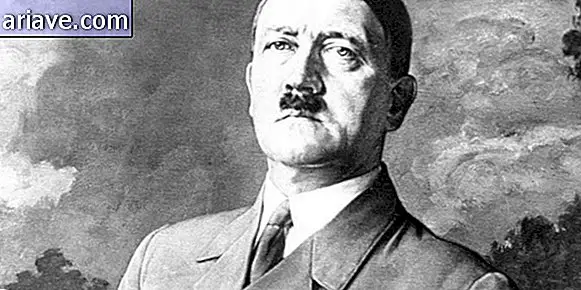Learn the story of the 10 warrior women who changed history
Whether she is a mother, a housewife, a scholar, a worker, a free spirit or all these options at the same time, every woman has a little warrior inside her. And as sexist as society and history tend to be, many of these fighters have managed to conquer space and rise above all men, completely changing the course of battles and the situation of entire countries.
In the following list, you can see who were the most famous female warriors in history, from the beginning of the Christian era until World War II. From the sisters who opposed the overwhelming forces of the Chinese empire and the creation of an extensive network of female ninjas to the iconic Joan of Arc and the best known sniper, learn the achievements of these incredible fighters.
1 - The Trung Sisters (1st century)
Trung Trac and Trung Nhi were born during the 1, 000-year period in which Vietnam remained under occupation of the Chinese Empire, witnessing from childhood the abuses and fierce control suffered by their compatriots. After suffering a particularly personal tragedy, they armed themselves and managed to defeat a local Chinese unit.

The deed inspired the Vietnamese to follow his lead, so the Trung sisters were able to form an army of about 80, 000 combatants, delegating the highest positions of command to women they trusted. The population forces not only managed to expel the Chinese in the year 40, but also elected the sisters as their queens and resisted the return of soldiers from China for two years.
Eventually, the Chinese formed a large army to defeat them, and legend has it that the enemy soldiers were naked on the battlefield to shame the women. Faced with their impending defeat, the Trung Queens committed suicide by drowning in the Hát River to preserve their honor. Today, the sisters are considered national heroines of Vietnam.
2 - Boudicca (1st century)
When the king of Norfolk in northern England died in battle, he declared that his kingdom should be jointly ruled by his wife Boudicca, his daughters, and Rome, but the Romans did not respect the decision and took full control by flogging the queen. and raping their descendants. Revolted, the ruler led a rebellion against the occupying forces of the Roman Empire.

Under his orders, the popular army won several victories against Rome and completely destroyed the city of Camulodunum (now called Colchester). Romans report that the British forces did not take prisoners, executing all the people they encountered on their way. Ironically, today the anti-imperialist rebel serves as a symbol of the British Empire and its statue oversees the city it demolished.
3 - Seventh Zenobia (3rd century)
Responsible for the Syrian government from 250 to 275, Zenobia led his armies mounted on a horse and wearing full armor to defeat the Roman legions under the reign of Claudio. Her victory was so decisive that her enemies had to retreat from much of Asia Minor, while Arabia, Armenia and Persia became her allies when she declared herself queen of Egypt by right of ancestry.
Claudio's successor Aureliano sent his most experienced legions to overthrow Zenobia, but it still took four years of battles and sieges for the capital city of Palmyra to be taken and its ruler imprisoned. The queen was chained and displayed on the streets of Rome with nine other Allied leaders before being exiled to Tibur (today Tivoli) - her daughters, however, married members of influential families in the Roman empire.

4 - Tomoe Gozen (12th and 13th centuries)
Considered the most famous female samurai of all time, Tomoe contradicted the conventions and insisted on fighting with her fellow men of the Genpei war, where her deeds gave her an essential position in defending the Japanese cause. Her ability with swords and bows was considered legendary, and some tales even claim that she could even ride untamed horses as she descended from canyons.

5 - Tamar of Georgia (12th and 13th centuries)
Daughter of King Giorgi III, Tamar possessed such intelligence that she was recognized by her father as assistant ruler and legitimate heir to his government. By taking over the crown, she suppressed the aristocracy's opposition to a woman in power and declared herself king of Georgia, abandoning the title of queen for passing an image of lesser power.
Over time, she defeated almost all neighboring Islamic states and her reputation grew and she came to be regarded by her people as "King of Kings and Queen of Queens." Tamar actively participated as a military commander of his army and brought his kingdom to the height of its political, economic and cultural power. His final victory against the aristocracy was to protect his common subjects against the abuses of the nobility.

6 - Joan of Arc (15th century)
Suffering from visions with God and his angels from the age of thirteen, the young Joan of Arc once went to the not yet crowned King of France, Charles VII, convincing him to let her face the British invasion during the War. One Hundred Years. Sent to the siege of enemies against the city of Orléans, she managed to break it in just nine days and proved her worth as a strategist and warrior.
After leading several other nimble victories, Joan brought Charles VII to the throne and became the first person in history to command the entire army of a 17-year-old nation. Even after suffering neck and head wounds, she continued to rack up victories for France until she was captured and deemed heretic by a false Catholic court, which burned her alive.

Subsequently, the trial of the "damsel of Orléans" was declared invalid by the Pope and she was canonized many years later. Today, Joan of Arc has become one of the most famous female warriors in the world and is considered the patron saint of France.
7 - Isabel I of Castile (15th and 16th centuries)
Crowned Queen of Castile, Spain, after an arduous war of succession, Isabel created the Holy Brotherhood in order to diminish the sheer mass of bandits who took to the country's roads after the conflict between aspiring rulers. She then closely followed the military campaigns of her husband, Fernando de Castile, and participated directly in the expulsion of the Moors from their territory.
Years later, the Queen gave credit to Christopher Columbus' ideas, even against the advice of court members and scientists at the time, helping to fund the trip that would result in what became known as the discovery of America. Finally, Isabel was one of the signatories of the famous Treaty of Tordesillas, which divided the “New World” between Spanish and Portuguese.

8 - Mochizuki Chiyome (16th century)
Wife of samurai Mochizuki Nobumasa, Chiyome was often in the care of feudal lord (daimyo, in Japanese) Takeda Shingen while her husband was leading forces in battle. When he learned that Nobumasa had died in combat and learned of rumors that his protégé would be descended from the Koga ninja clan, the sovereign gave the widow a special mission.
Chiyome was responsible for recruiting and training a secret network of kunoichi (ninja women) who would act as secret agents. In addition to delivering coded messages to daimyo allies, they were responsible for gathering information about opponents, seducing them to approach them, and, when necessary, murdering them. Shortly thereafter, it is believed that the hidden network came to somewhere between 200 and 300 ninjas.

At the behest of its leader, the organization served the feudal lord until his mysterious death in 1573. Mochizuki Chiyome became so famous that he became a kind of cultural icon in Japan, appearing as a character in games like Red Ninja: End of Honor, Samurai Warriors and Sangoku Heroes, among others.
9 - Rani Lakshmibai (19th century)
Often considered the Indian version of Joan of Arc, Lakshmibai also came suddenly from humble beginnings to end the feast of the British. The famous British West India Company tried to attach its territory to Jhansi by bribery, but on refusal the company decided it was time to use force.
What they did not know was that Lakshmibai had been instructed by his father to fight using axes, swords and even horses trained to jump on fire. Leading a series of furious rebellions, she defended her territory with all her might until she was killed in her early twenties, becoming a martyr for India's independence movement.

10 - Lyudmila Pavlichenko (20th century)
Born in Russia in the midst of World War I, Lyudmila moved with her family to Kiev at the age of 14, where she then worked as a sander in an armament factory and joined a shooting club of a Soviet paramilitary organization. Her hobby as a shooter continued even after she completed a master's degree in history at Kiev University.
During World War II, she continued to study when the Germans began their invasion of the Soviet Union. Pavlichenko then introduced himself as one of the first volunteers in the military recruitment office and, declining his role as a nurse, became one of the Red Army's 2, 000 female snipers - of whom only about 500 survived the war.

After just over a year in the conflict, Lyudmila has amassed a total of 309 confirmed deaths, including 39 enemy snipers. In June 1942, however, she was wounded by a mortar fire and was removed from the fighting. In addition to becoming a major sniper instructor and the first Soviet citizen to be greeted by a US president in the White House, Pavlichenko was awarded the Gold Star of the Hero of the Soviet Union.
Honorable Mentions
In addition to the great women cited throughout this list, many other warriors have also made their names in world history. Check out some of them below:
- Amelia Earhart: the most famous aviator in the United States;
- Anna Yegorova: Soviet Union pilot and heroine in World War II;
- Agustina de Aragón: the Spanish "Joan of Arc", she prevented the French from occupying Saragossa during the Napoleonic period;
- Anne Bonny: the most infamous pirate captain;
- Caterina Sforza: tyrant of medieval Italy who subjected her enemies to cruel torture
- Ching Shih: the pirate who commanded a fleet of ships so powerful that it defeated the Imperial Navy of China;
- Elizabeth Bathory: Countess of Transylvania and inspiration for the vampire myth Dracula;
- Flora Sandes: the only British woman to serve in combat in World War II;
- Genevieve de Galard: the "angel of Dien Bien Phu";
- Grace O'Malley: The "Pirate Queen of Connaught";
- Hannah Dustom: American colonist who escaped from her captors by killing with an ax;
- Hawa Abdi: The gynecologist who saved thousands of lives and fought as militias in Somalia for 30 years;
- Isabella of France: the British queen who deposed and executed the king;
- Jacqueline Cochran: One of the most successful pilots in history;
- Jeanne Hachette: the teenage girl who defended her town using an ax;
- Jennie Irene Hodges: Also known for her disguise Albert Cashier, Union soldier in the American Civil War;
- Jennifer Musa: The Irish Queen of Balochistan;
- Khawla Bint Al-Azwar: Warrior Heroine of Islamic Expansion;
- Lozen: Apache warrior and leader who was skilled in weapons, medicine, and prophecy;
- Lydia Litvyak: the first woman in history to win an air battle alone;
- Marie Colvin: the war correspondent who faced countless regions of conflict;
- Matilda de Canossa: Italian warrior princess who served as the Pope's personal guard;
- Milunka Savic: the most decorated soldier in history;
- Nina Onilova: the Ukrainian orphan who terrorized the Nazis with her machine gun;
- Nzinga Mbande: the African war-queen who terrorized the Portuguese and drank the blood of their enemies;
- Princess Pingyang: a 20-year-old girl who led a peasant army against the emperor of China;
- Rukhsana Kauser: The 18-year-old Indian rancher who defeated six machine gun-armed terrorists;
- Tomyris: warrior queen of the Massegateans who defeated the leader of a great ancient empire.
So, do you know of any other great women whose deeds were recorded in the history books and changed the course of the world? Leave your contribution in the comments.











